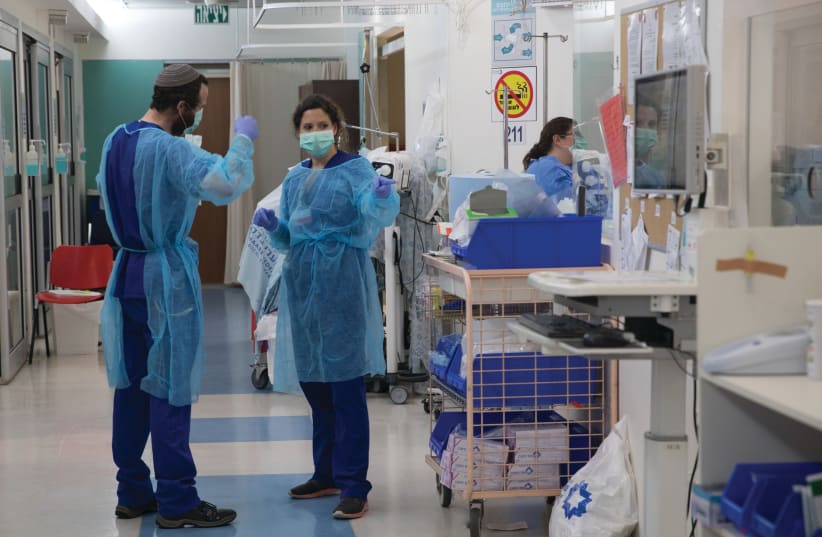Over the years and with the increase in needs, the emergency rooms expanded and strengthened with staff and technologies, expanding the medical services provided to also primary care, and began to diagnose, treat and stabilize, and inevitably hospitalize/delay/board patients within their walls for relatively long periods, due to hospitalization bed shortages. It is no coincidence that they were renamed about three decades ago from emergency rooms to emergency departments.
There are currently 30 such emergency departments – EDs – in public hospitals, with some 1,500 standard treatment stations, treating about three million cases a year, and if we take into account that each patient arrives with at least one or two attendants, we reach the astronomical number of 10 million people who visit the EDs annually.
About a third (one million) of the patients are admitted to the various departments of the hospitals, and the rest are discharged to either go home or to various institutions after diagnosis, clarification and initial treatment.
Due to geopolitical and security constraints, we are prepared and trained to work in emergencies including conventional mass-casualty events, as a result of wars and hate crime attacks. During the past decade, we have also experienced epidemics caused by violent viruses such as bird flu, swine flu and others.
In the past year, the emergency departments, which form a front line and are the junction connecting the community with the hospitals, have been asked to face a very difficult challenge and an almost impossible task. The task included continuing to provide urgent and various forms of care to hundreds of thousands of difficult and acute conventional emergency patients, on the one hand, while also preparing for COVID-19 cases that required early detection and isolation of the patients, receiving them for hospitalization separated from conventional patients.
The task was not easy to say the least and included, among other things, the preparation of wards and other locations within the hospital, both inside and outside the EDs, which are designated for examining potential patients.
Even on regular days, and before corona, the EDs in the country were overloaded at any given moment, with thousands of urgent patients requiring immediate examination and treatment, for such conditions as heart attacks, strokes, severe injuries from accidents of all kinds, severe infections, and of course seasonal flu and all its complications.
In addition, we treated elderly and helpless patients who, due to the duress faced in the hospitals and the lack of available beds in the wards, were hospitalized/boarded for too many hours in the EDs until they were transferred to a bed in a regular ward.
It is clear to any sane person that there is distress and a dire shortage of hospital beds and that the obscene solution of keeping patients for many unnecessary hours in emergency departments undermines the quality of care for both current boarding and new urgent patients.
Our dear old and helpless patients are stuck helplessly in emergency departments and are begging to be moved into the internal wards.
I sincerely hope that in the midst of the cursed storm of the corona plague, and as we approach another Knesset election, a sharp public and political debate will be held to strengthen medicine in general and the public in particular.
The emergency departments are standing as one of the pillars of any national emergency response. But they face chronic and long-standing low budgeting. If the situation does not change, we will have no choice but to rename the Department of Emergency Medicine to the Department of Boarding Medicine.
Aziz Darawsha is Director of the Department of Emergency & Urgent Care Medicine at Rambam Hospital, Haifa.
